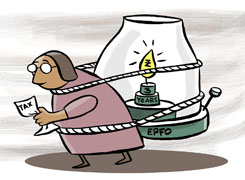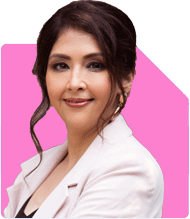Ramalingam Kalirajan |10902 Answers |Ask -Follow
Mutual Funds, Financial Planning Expert - Answered on May 29, 2024
He has an MBA in finance from the University of Madras and is a certified financial planner.
He is the director and chief financial planner at Holistic Investment, a Chennai-based firm that offers financial planning and wealth management advice.... more

I have worked in India over 15 year and the company that I worked had deducted my PF from my salary and deposited in my PF account. 9 years back I left the job in India and relocated to Dubai. I didn't withdrew my PF and till certain period I was able to see my PF balance. Later I forgot about it and now when I try to login to my account, it doesnt allow me to login as my Aadhaar account was not linked to my PF account. I reached out to my employer and submitted all documents as suggested by my employer to activate my PF account and link my Aadhaar to my PF account . My question is, is it ok to keep my money in PF account until I turn 60/retirement age and withdraw the amount and take benefit of the pension fund. Or should I withdraw the amount now and invest it in FD or MF. I had not withdrawn my PF fund because I was aware that PF allow only 2/3rd of the PF fund to be withdrawn and 1 /3rd remain in the account under pension scheme that we receive as pension after retirement.
Understanding Your Provident Fund (PF)
Your Provident Fund (PF) is a long-term savings scheme to provide benefits during retirement. You have a significant amount accumulated from your years of service in India.
Keeping Money in PF Until Retirement
Leaving your money in the PF account until retirement has certain advantages.
Benefits of Keeping Money in PF
Safety and Security: PF is a government-backed scheme, offering high security.
Tax-Free Interest: Interest earned on PF is generally tax-free until withdrawal.
Regular Pension: Upon retirement, you will receive a regular pension from the Employees’ Pension Scheme (EPS).
Potential Drawbacks
Lower Liquidity: Funds are locked in until you reach retirement age, limiting access.
Inflation Impact: The fixed interest rate may not always keep pace with inflation.
Withdrawing PF and Investing Elsewhere
Alternatively, you can withdraw your PF and invest it in other instruments like Fixed Deposits (FD) or Mutual Funds (MF).
Benefits of Withdrawing and Investing
Higher Returns Potential: Mutual funds, especially equity funds, have the potential for higher returns.
Diversification: Investing in different instruments can spread and reduce risk.
Liquidity: Investments in mutual funds and FDs are more liquid, allowing easier access to funds.
Risks to Consider
Market Volatility: Equity mutual funds can be volatile and subject to market risks.
Tax Implications: Withdrawals from PF before 5 years of continuous service are taxable.
Evaluating Fixed Deposits (FD)
Fixed Deposits (FD) are a safe investment option but have their own pros and cons.
Benefits of FDs
Safety: FDs are low-risk and provide guaranteed returns.
Fixed Interest: You know exactly how much interest you will earn over the term.
Drawbacks of FDs
Lower Returns: FDs typically offer lower returns compared to equity mutual funds.
Taxable Interest: Interest earned on FDs is taxable, reducing net returns.
Evaluating Mutual Funds (MF)
Mutual funds can offer better returns, especially if you choose actively managed funds.
Benefits of Mutual Funds
Higher Returns Potential: Over the long term, mutual funds, especially equity funds, can provide substantial returns.
Professional Management: Fund managers handle investments, aiming to maximise returns.
Diversification: Mutual funds spread investments across various assets, reducing risk.
Disadvantages of Index Funds
Average Returns: Index funds mimic market indexes and provide average returns, which may not be optimal.
Lack of Flexibility: They cannot adapt to market changes like actively managed funds can.
Less Protection in Downturns: Index funds cannot avoid poorly performing sectors or stocks.
Choosing Between Direct and Regular Funds
When investing in mutual funds, it’s important to choose between direct funds and regular funds.
Disadvantages of Direct Funds
No Advisory Support: Direct funds lack guidance from a Certified Financial Planner (CFP).
Time-Consuming: Managing and choosing the right funds requires significant time and knowledge.
Higher Risk of Missteps: Without professional advice, the risk of making suboptimal choices increases.
Benefits of Regular Funds
Professional Guidance: Investing through a CFP provides expert advice tailored to your goals.
Regular Monitoring: A CFP regularly reviews your portfolio, making necessary adjustments.
Optimised Portfolio: CFPs ensure your investments align with your risk profile and goals.
Deciding the Best Course of Action
To decide whether to keep your PF or withdraw and invest, consider the following:
Personal Financial Goals
Time Horizon: If you have a long-term horizon, mutual funds might be suitable for higher returns.
Risk Tolerance: Assess your comfort level with market volatility and risks.
Financial Needs
Liquidity Needs: Consider if you need access to funds before retirement.
Tax Considerations: Evaluate the tax implications of withdrawing your PF and the tax benefits of other investments.
Conclusion
Deciding whether to keep your PF until retirement or withdraw and invest in other options depends on your financial goals, risk tolerance, and need for liquidity. Keeping your PF offers security and a regular pension, while withdrawing and investing in FDs or mutual funds could potentially offer higher returns. Consulting with a Certified Financial Planner can provide personalised guidance and help optimise your investment strategy.
Best Regards,
K. Ramalingam, MBA, CFP,
Chief Financial Planner,
www.holisticinvestment.in
You may like to see similar questions and answers below
Milind Vadjikar | Answer |Ask -Follow
Insurance, Stocks, MF, PF Expert - Answered on Sep 22, 2024
Milind Vadjikar | Answer |Ask -Follow
Insurance, Stocks, MF, PF Expert - Answered on Oct 15, 2024
Samraat Jadhav |2514 Answers |Ask -Follow
Stock Market Expert - Answered on Dec 18, 2025
Reetika Sharma |432 Answers |Ask -Follow
Financial Planner, MF and Insurance Expert - Answered on Dec 18, 2025
Reetika Sharma |432 Answers |Ask -Follow
Financial Planner, MF and Insurance Expert - Answered on Dec 18, 2025
Reetika Sharma |432 Answers |Ask -Follow
Financial Planner, MF and Insurance Expert - Answered on Dec 18, 2025
Samraat Jadhav |2514 Answers |Ask -Follow
Stock Market Expert - Answered on Dec 18, 2025

Kanchan Rai |648 Answers |Ask -Follow
Relationships Expert, Mind Coach - Answered on Dec 18, 2025
Kanchan Rai |648 Answers |Ask -Follow
Relationships Expert, Mind Coach - Answered on Dec 18, 2025
Anu Krishna |1754 Answers |Ask -Follow
Relationships Expert, Mind Coach - Answered on Dec 18, 2025
Anu Krishna |1754 Answers |Ask -Follow
Relationships Expert, Mind Coach - Answered on Dec 18, 2025
Anu Krishna |1754 Answers |Ask -Follow
Relationships Expert, Mind Coach - Answered on Dec 18, 2025























